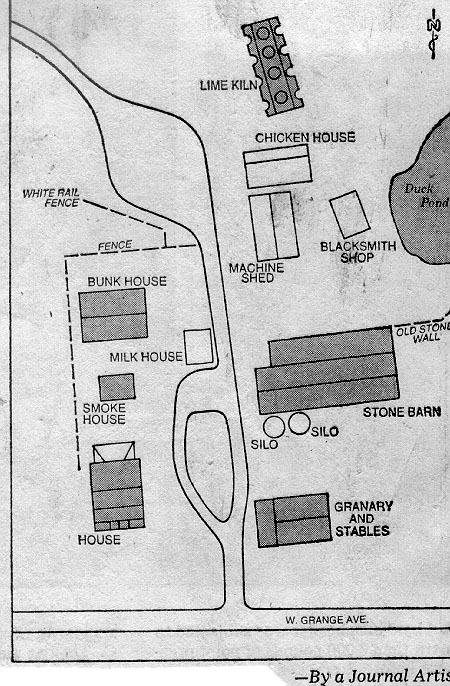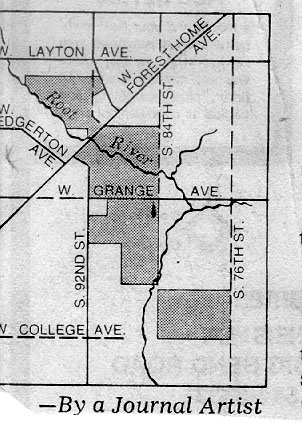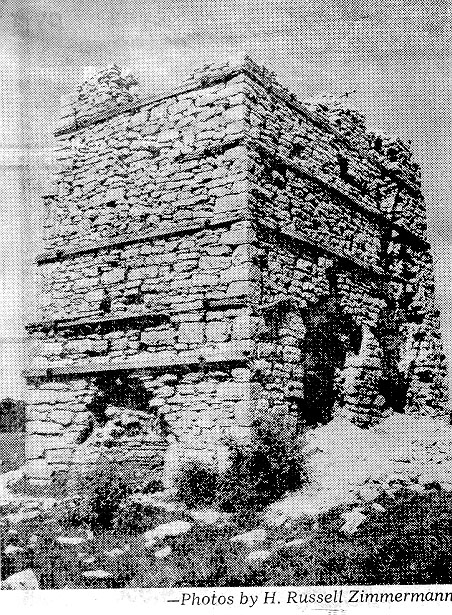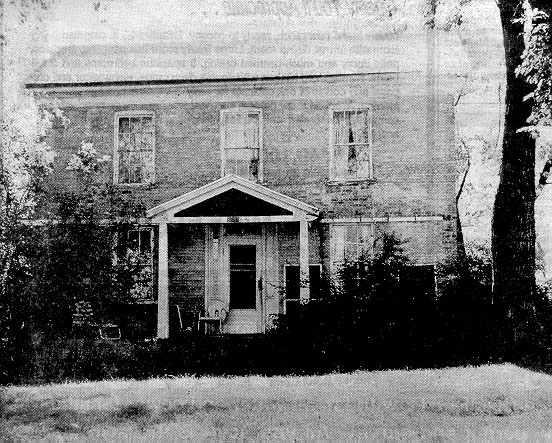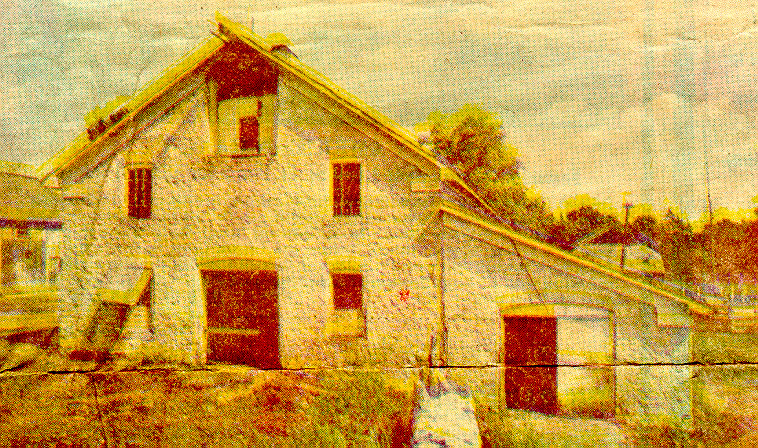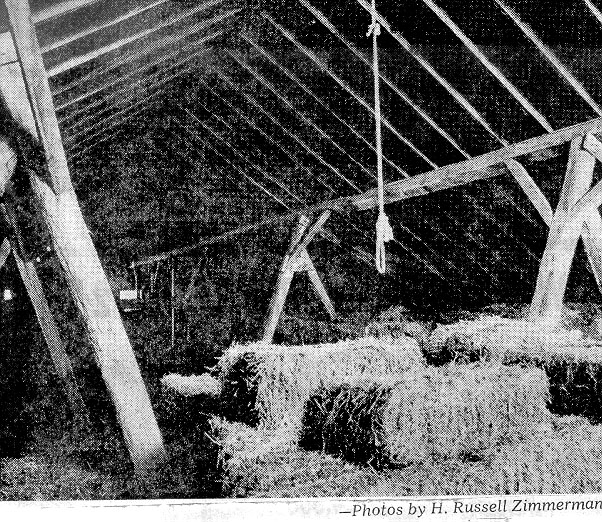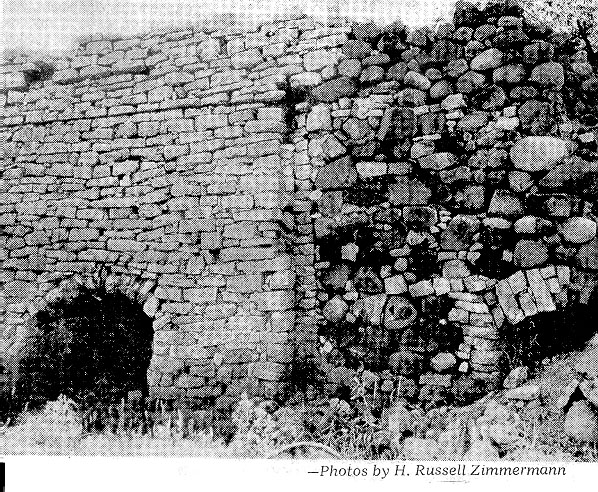In 1850, O'Donnell leased his lime manufacturing business and 10 acres to a partnership that included Jacob Kier, Louis Esser and Matthew Joseph. A year later Trimborn and Kier formed the partnership and purchased the 10 acres which included two limekilns and the house.
To avoid complications with his previous partners, Kier transferred his one-half interest in the property to Trimborn to be held in trust.
Four years later Kier took Trimborn to court on the complaint that Trimborn had sold the ten acres to his son, August, "without consideration and in fraud of the rights of this complaint."
The courts forced a settlement and the partnership was dissolved.
From that day until his death in 1879, Trimborn poured his energies into building the lime business, which made him a wealthy man.
By the time he was an old man, his Greenfield Township farm had grown to 530 acres, he owned six houses and a number of choice lots in Milwaukee and 80 acres in Muskego.
Born in Germany
But his wealth had not come easily. He was a self-made man who with determination and backbreaking labor fought for every dollar.
He was born in 1801 in the town of Geich in Prussia. He married in his 20s and after his parents' deaths inherited their farm, a tavern and a general store.
His wife, however, contracted a serious illness, which lasted for 18 years and drained all of the family's resources. When she died, Trimborn decided that since he had to work for someone else, he might as well do it in the land of opportunity. His family agreed and they set out for America, arriving in Wisconsin July 24, 1847.
Having little money, he was forced to rent a farm on Beloit Rd. He tired quickly of farming and moved into Milwaukee where the 1851 city directory listed him as a teamster located on E. Water St. It was with the proceeds of that work that he entered the partnership with Kier.
Put Sons to Work
Once in the lime business, Trimborn put his sons, August and Leonard, to work and hoped for rapid success. But because they were German, and since they had competitors, there was more resistance than they had anticipated.
Selling lime became so tough that his sons wanted to give up and work for someone else. Trimborn persisted, however, believing that Milwaukee would become a large city and that business would improve.
His optimism was well founded and within a relatively short time he saw the business grow to become a dominant supplier.
When the company was at its peak, an article appeared in the June 13th, 1875 issue of the Volks-Magazin. (See Volks-Magazin article.) In the story, the following description (translated from German) was written of the farm:
"The property on which the lime kiln is found lies in the friendly valley in the town of Greenfield. Root Creek runs through it. Its complete area is 523 acres. The roomy living quarters are built of Milwaukee brick set on a solid foundation of limestone and functionally furnished.
"Among several living quarters for men, sheds and stables, there are also placed a fruit house, a massive barn for horses and a large frame granary with stables for cattle, pigs and fowl.
"Six limestone kilns are always in production, in winter less, in summer more, and to keep them running usually takes 30 to 40 laborers.
"More than 20 wagons and sleighs and over 50 horses are kept on the farm to bring the limestone to the kiln and to take away the lime, as well as supplying the necessary fuel which generally runs to about 6,000 cords of wood a year.
When lime is added to the proper amount of sand and water, a mortar is formed which, upon setting, becomes as hard as rock. This basic gem of chemistry has been used for centuries to hold man's architectural creations together.
To make it, limestone (impure calcium carbonate) is stacked in a vertical kiln (oven). Intense heat is applied at the bottom of the pile (by a wood fire in the old days) and a chemical decomposition takes place.
Residue Is Lime
Carbon dioxide gas (the gas of carbonated beverages) is released from the limestone, leaving calcium oxide, which is lime, as a residue. The reaction normally would be reversible, and would not make lime, but the tall vertical chimney creates such a draft that carbon dioxide is drawn off before it can enter a reaction.
The Trimborns and their predecessors were blessed with a sizeable deposit of limestone, close to the surface. A large abandoned quarry and a smaller excavation can still be seen on the property north of Grange Ave.
The wooden clapboard siding covers a wall where brick is used to fill spaces between the study. There is no covering on the inside, and it appears that it was originally that way since the mortar joints are very neat.
In the foreground, at right, is a stable or granary sided in vertical board and batten. Behind it is the most important piece of architecture on the property.
